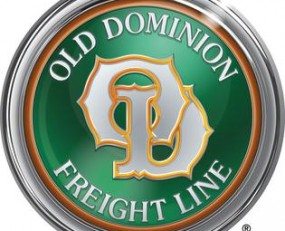
Old Dominion Freight Line is coping relatively well with the challenging market for trucking companies and continues to reward shareholders who have faith in its prospects, at least judging by a new stock buyback programme of up to $250m.
The financial performance of the $5.4bn market-cap haulier was subdued in the first quarter of 2015, but it managed to contain any damage, its latest trading update revealed on 28 April.
Revenues grew 1.6% to $707m in the three months ended March 31, with EBIT down to $99.5m from $103m one year earlier.
Net income dropped 3.6% year-on-year, while diluted earnings per share fell at a slower pace, down 1.4% to $0.72, from $0.73 based on a share count that was only 2.3% lower than in Q1 2015.
Chief Executive David Congdon acknowledged that revenues were not “as strong as we would have liked”, despite one additional working day in Q1 2016. But he said the group was encouraged “by our ability to win market share”, while maintaining a focus on long-term profitable growth.
Nonetheless, wages, salaries, and benefits – its main operating costs at $400m in Q1 – soared some 370 basis points as a percentage of revenues year-on-year, and were up almost 9% year-on-year from $368m.
Congdon said that Old Dominion produced solid results in the period, “despite an operating environment that continues to be challenging”.
Results were impacted by a 23.3% decline in fuel surcharges, while non-less-than-truckload revenue “decreased $8.9m, or 40.2%, primarily due to the strategic elimination of certain services in the second half of 2015.”
The pricing environment was relatively stable, as reflected by the 3.8% increase in LTL revenue per hundredweight, excluding fuel surcharges, but the company faced increased competition on prices.
“While we recognise that a soft economic environment can lead to the loss of pricing discipline in the industry, we have not seen signs of broad-based irrational pricing,” he added.
Quarterly operating cash flow stood at $168.4m, down 2.4% year-on-year, in spite of what appears to be good working capital management.
Meanwhile, capital expenditures were $120.3m compared to $72.2m one year earlier, pushing down quarterly free cash flow (FcF) to about $50m, which implies a projected FcF yield of between 4% and 5% for the full year. The company currently expects capital expenditures of $405m for the full year, $35m below its guidance in February.
“This revised total includes planned expenditures of $170m for real estate and service centre expansion projects, $200m for tractors and trailers and $35m for technology and other assets,” it said.
The company had only $7.1m in cash and cash equivalents as of March 31 2016, but its capital structure is sound.
It repurchased $44.6m of common stock in Q1, leaving $35.7m available to repurchase under its previously authorised $200m stock buyback programme, and it plans to seek authorisation for a new share repurchase programme in the second quarter. Its shares, which do not pay dividends, are virtually unchanged since the summer of 2014.
Source: Transport Intelligence, 1st June 2016
Author: Alessandro Pasetti